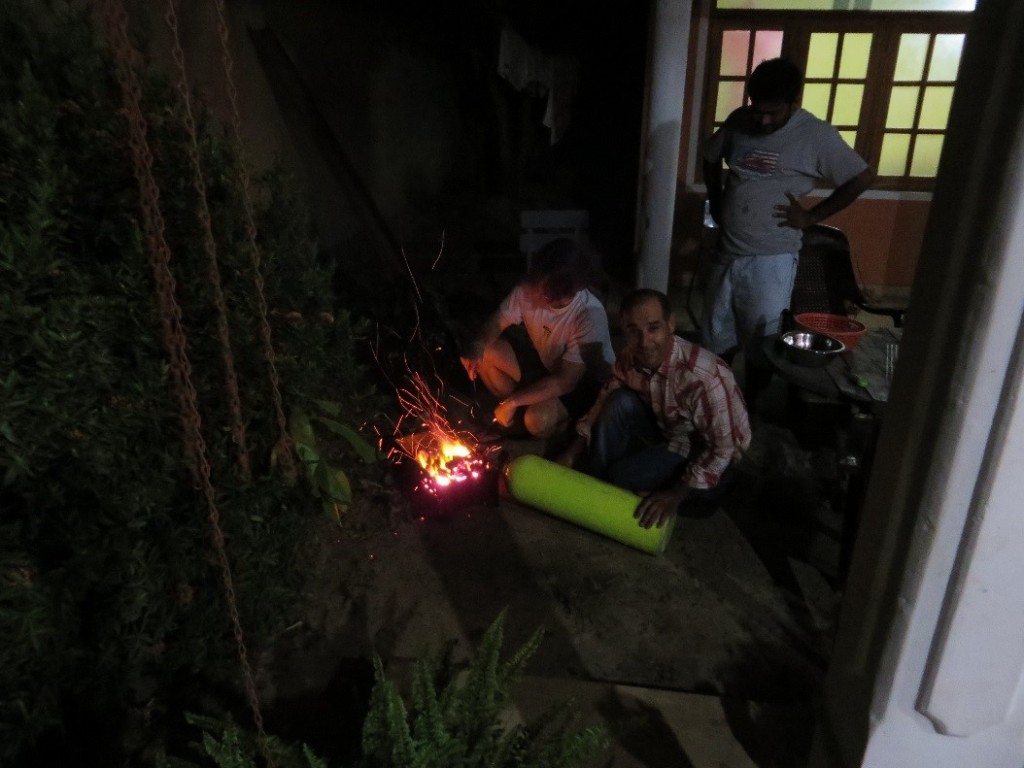Author: Laura White
If the well-known adage, “a failure to plan is a plan to fail,” is true, then INA’s research team and our local collaborators in Sri Lanka are most definitely poised for success after this week’s efforts! The last few days have been spent finalizing details to ensure safe and efficient working conditions on the site.
Once the Seahorse arrived in Hambantota harbor, a few changes had to be made to transform it from a fishing boat to a secure diving platform.

The faithful (if diminutive!) Seahorse in the foreground, with our massive neighbors in Hambantota harbor. Photo by Ken Trethewey.
We rearranged the ballast, removing water from the boat’s large fish holds and adding sandbags in its place to make the vessel more stable in the choppy sea conditions of the Indian Ocean. It was a dirty, sweaty, and heavy job, but also one that was completely necessary and that has immensely changed the way that the Seahorse moves in the water, making it a much more usable platform for our work.
With the assistance of our always helpful welder, we were also able to modify our diving ladder, which was of immense benefit for efficiency and safety last season, so that it could be installed on this vessel. We also added secure storage for tanks and gear, a sunshade to allow protection from the equatorial rays, freshwater tanks for rinsing cameras and gear, and seating areas for divers to use while they gear up.
Our work was not only limited to the boat; however, and we also had quite a bit to do in the harbor, including large and small jobs such as replacing the diesel motor on our compressor with an electric one to provide quieter, (and cleaner!) air fills. Perhaps most importantly, we also pressure-tested the recompression chamber that we brought from Texas and ran chamber operation clinics with all members of our diving team, so that any member can feel confident assisting with operating the chamber in case of an emergency.

Field Director Orkan Köyağasıoğlu and INA Associate Director Ken Trethewey review chamber operation procedures. Photo by Karen Martindale.
Though we know we will run across many obstacles when diving begins, we are optimistic about our successes in these preparation steps, and pleased that the variety of expertise of our research staff and local collaborators has allowed us to solve many of these minor issues before they become major dilemmas! We celebrated our successes with a hard-earned barbeque, (with a fire stoked from the air in an extra scuba tank! Again, truly a work of expertise!)




